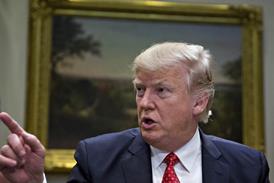Budding journalists are taught from an early stage in their training that there are strict rules around naming parties involved in family cases. The same is undoubtedly true for aspiring lawyers.
But in the age of social media - and with the opportunity for cyber endorsements at our fingertips - that golden, even elementary rule, seems to have bypassed one barrister.
In a report published last week bar regulator the Bar Standards Board (BSB) summarised a selection of complaints it received in the last year.
One in particular stood out.
A party to a family proceeding had complained about her ex-husband’s barrister becasue the barrister in question had tweeted a photo of case files he was working on. This, according to the BSB’s report, was to ‘illustrate the amount of work he needed to do one evening’.
What he hadn’t counted on was that the bundlle included the complianant’s case and that the names of the parties involved could be read.
You can see how it happened. Mr Barrister is settling down to do some work. But more importantly, it may have been minutes, possibly even hours, since he received any likes or retweets on Twitter.
’I know’, he thinks to himself, ’let’s show the world how important I am by tweeting a photo of this mountain of papers. It’s also in the evening, doubly impressive for my social media following as it shows what a hard worker I am.’
We aren’t made aware of the nature of the dispute, but it’s a mistake that could have had damaging ramifications. The names of those involved in family proceedings are often kept private for good reason.
Luckily Mr Barrister’s pursuit of cyber recognition doesn’t appear to have yielded any lasting damage.
The BSB said the complaint revealed a potential ’medium-risk breach’ of the barristers’ Handbook, breach of confidentiality.
Mr Barrister said he had not been conscious at the time what the photo showed and removed the tweet the next morning when the issue was brought to his attention. He recieved an adminsitrative warning and the BSB noted this was a ’one-off’ tweet.
Clearly its a good thing he deleted the photograph swiftly, but why did he feel the need to tweet it in the first place?
Twitter can be good for discussion and debate but finer details of casework should be left for the courtroom.


























2 Readers' comments